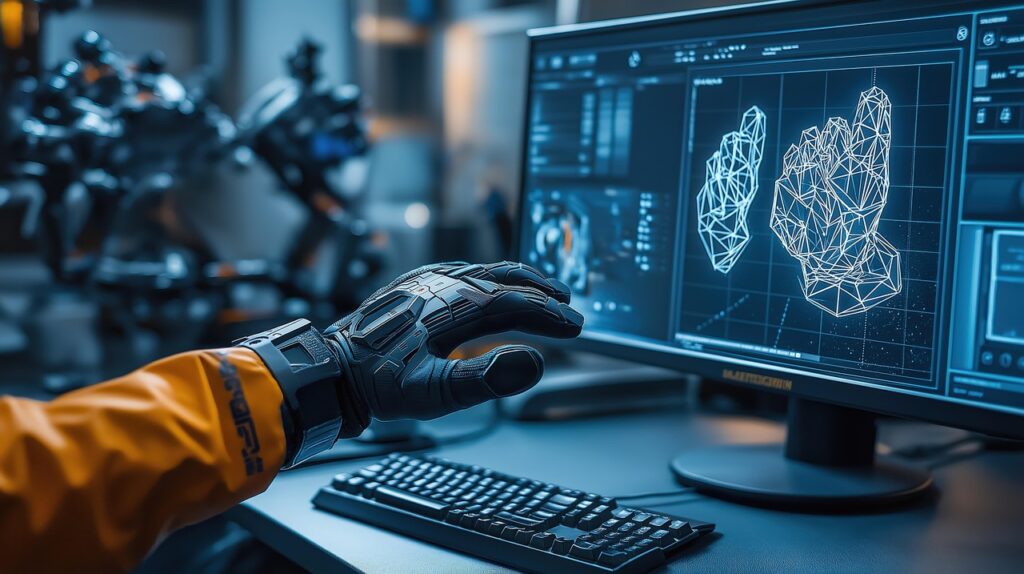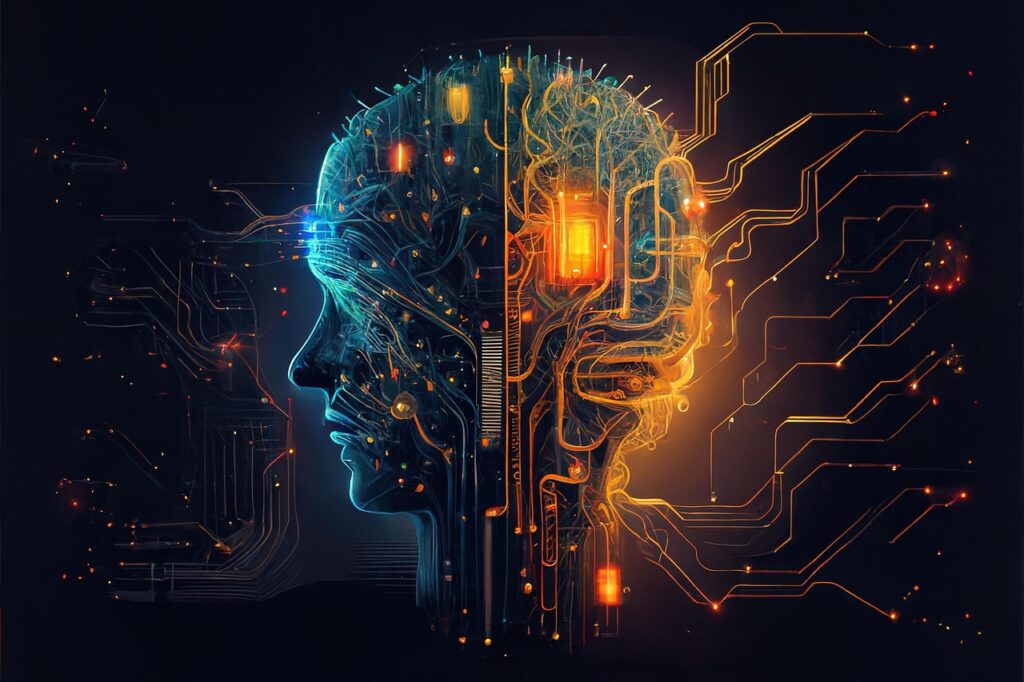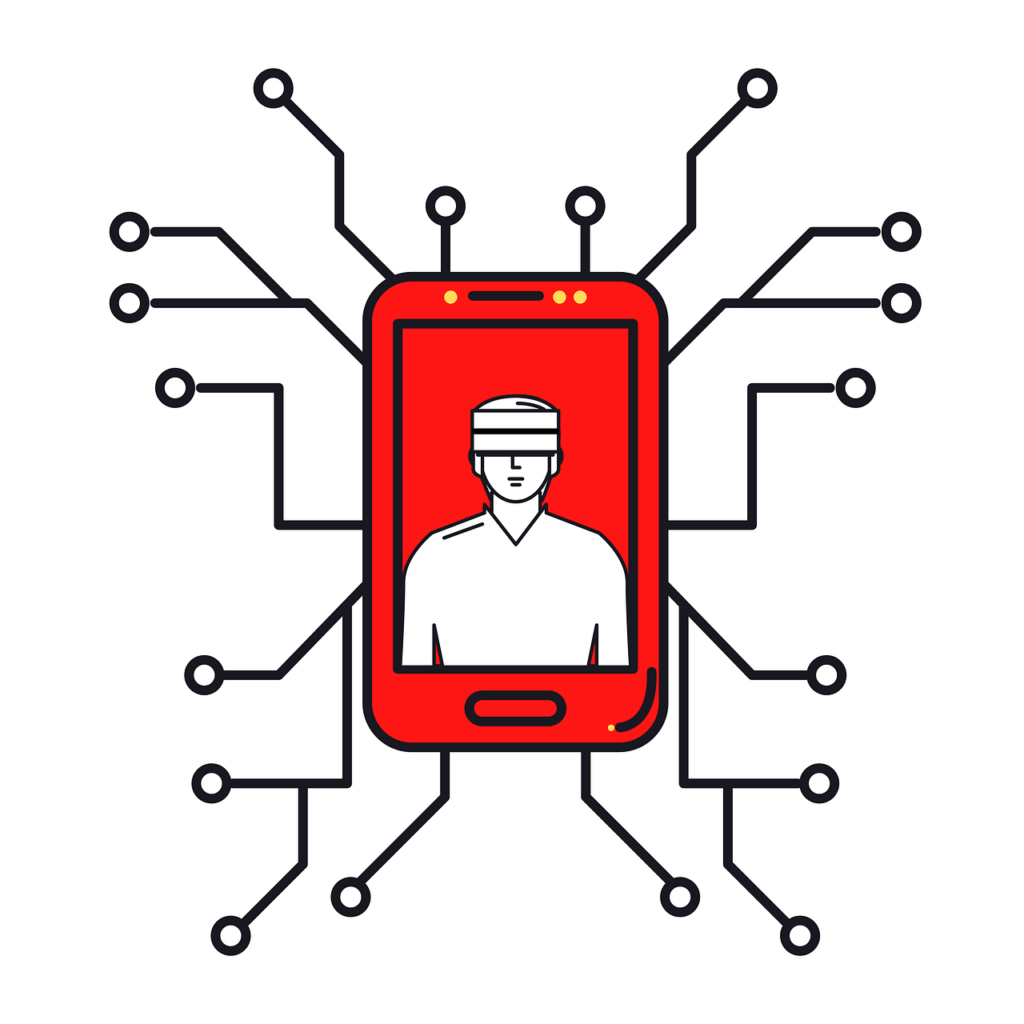The digital landscape is undergoing a profound transformation, and with it, the very nature of cybercrime. Artificial intelligence, once confined to the realms of science fiction and specialized labs, has now burst into the mainstream, bringing with it not only unprecedented advancements but also a sophisticated new breed of threats. Criminals are harnessing the immense power of AI to automate deception on a scale previously unimaginable, making fraudulent activity faster, cheaper, and exponentially harder to detect.
This shift means that AI-driven fraud is no longer an abstract concern; it is a present and rapidly escalating danger. From large-scale impersonation networks to the creation of entirely synthetic identities, AI is exploiting the very gaps in our verification systems that were once considered robust. Sam Altman, CEO of OpenAI, starkly highlighted this concern when he warned Federal Reserve officials that AI has “already undermined most traditional forms of authentication, leaving passwords as one of the few methods still standing.” This is a sobering assessment that underscores the urgency for individuals and organizations alike to understand and adapt to this new security paradigm.
The growing sophistication of these AI-powered attacks signals a critical new security challenge. The damage extends far beyond mere financial loss, eroding trust in our digital systems and making the very act of proving authenticity a complex endeavor. To combat these evolving threats, we must adopt adaptive systems capable of detecting intricate manipulations and preserving trust across all our digital interactions. Understanding the mechanics of these new AI-driven scams is the crucial first step in building a resilient defense. Here, we delve into the first six of these formidable new identity fraud tactics.

1. **Deepfake Visual Content (Images & Videos)**One of the most insidious applications of AI in identity fraud involves the generation of deepfake identification images and videos. Generative models are now capable of creating incredibly realistic faces, ID photos, and even short videos that can effortlessly pass through both automated scanners and the casual scrutiny of human reviewers. This advanced capability allows fraudsters to submit these fabricated visual fakes during critical processes such as remote onboarding or account recovery, effectively impersonating legitimate users and circumventing established visual verification checks.
These sophisticated forgeries represent a significant leap beyond traditional methods of document tampering. Older security systems were meticulously designed to detect human forgery, looking for tells like inconsistencies in ink, paper, or photographic elements. However, they were never intended to counter the machine-made precision that AI brings to the table, where lighting, motion, and facial texture can be mimicked with astonishing accuracy.
The sheer quality of AI-generated deepfakes means that static ID uploads, a cornerstone of many verification processes, are fundamentally vulnerable. Whether it’s a single image or a video submission, the ability of AI to produce high-quality synthetic media blurs the line between genuine captures and malicious fabrications. This unprecedented realism is why distinguishing between what is real and what is artificially generated has become a daunting task for both technology and human perception.

2. **Voice Cloning & Synthetic Audio**Beyond visual deception, AI has also mastered the art of auditory mimicry through voice cloning and synthetic audio. The technology is so advanced that with just a few seconds of recorded speech, AI can accurately reproduce a person’s unique tone and accent. This capability forms the backbone of highly effective phone scams, where attackers wield cloned voices to authorize fraudulent transfers, reset accounts, or manipulate call center agents into divulging sensitive information.
This threat, often referred to as vishing (voice phishing), leverages the inherent trust people place in familiar voices. Imagine receiving a call from what sounds exactly like a family member, an accountant, or a doctor, making an urgent request. The emotional connection and perceived authority of the cloned voice significantly increase the likelihood that targets will comply, sharing credentials or approving requests that they would otherwise scrutinize.
The pervasive nature of publicly available audio, often found on social media accounts or in short interview clips, provides fraudsters with a vast pool of raw material for training their AI models. The ease with which these voices can be cloned, nearly instantly, by analyzing even brief vocal snippets, means that practically anyone with an online presence can become a target. This creates a critical vulnerability where personal relationships are weaponized through synthetic auditory impersonation.

3. **AI-Driven Phishing & Social Engineering**While deepfakes and voice clones grab headlines for their visual and auditory realism, AI’s application in text-based deception, particularly through automated phishing and social engineering, is equally potent. Large language models are now capable of crafting personalized messages at an unprecedented scale, leveraging publicly available information to tailor their tone, timing, and content. The result is a surge of highly convincing phishing emails, texts, or social media messages that are significantly more effective than their traditional counterparts.
Historically, phishing messages were often identifiable by their awkward phrasing, grammatical errors, and misspelled words, acting as clear red flags for wary recipients. However, the advent of AI has obliterated these tell-tale signs. Cybercriminals, regardless of their geographical location or linguistic background, can now generate perfectly convincing fake messages that are nearly indistinguishable from authentic communications, thereby neutralizing a primary defense mechanism.
The power of AI in this context is its ability to scale personalization. It enables scammers to deploy phishing messages to vast numbers of targets, dynamically scraping details from social media profiles to make each message uniquely relevant and persuasive. This level of customization dramatically increases the chance that targets will share credentials, click malicious links, or approve fraudulent requests, making these AI-generated attacks harder than ever to detect as scams.
Read more about: Fortify Your Remote Fortress: 12 Essential Cybersecurity Strategies for US Remote Workers

4. **Synthetic Identities**Synthetic identity fraud, though not entirely new, has been profoundly revolutionized by AI, elevating it to a sophisticated and pervasive threat. This scheme involves fraudsters combining fragments of real personal data with AI-generated details to construct entirely new, fictitious personas. These hybrid profiles are meticulously crafted to pass basic verification checks, allowing them to open accounts, secure loans, or engage in transactions without corresponding to any single, verifiable real person.
What makes AI-enhanced synthetic identities particularly dangerous is their inherent ability to appear legitimate within rule-based systems. Traditional legacy systems that validate user data by matching it against existing records often fail against these blended identities. Because a synthetic identity incorporates some genuine data, it can cleverly navigate and bypass verification and compliance checks, operating unnoticed within financial and other institutions.
The process often begins with data harvesting, where attackers collect information from breached databases, social media, public records, and commercial datasets. This raw data, sometimes just low-quality profile photos or public comments, is then used to train AI models. The AI fills in the gaps with fabricated but credible details, creating a consistent, believable, yet entirely artificial persona. This allows fraudsters to establish credit lines, engage in money laundering, or perform other illicit activities under an identity that technically doesn’t exist but functions convincingly within digital systems.
Read more about: Maxine Clair: The Acclaimed Writer Who Found Her Literary Voice in Middle Age, Dies at 86

5. **Data Stitching & Profile Synthesis**In tandem with creating synthetic identities, machine learning has also enabled a powerful technique known as data stitching and profile synthesis. This involves AI algorithms merging disparate leaked records, public profiles, and commercially available data into cohesive, comprehensive user profiles. The goal is to construct identities that appear remarkably consistent and credible across various platforms, thereby bolstering a fraudster’s perceived legitimacy over time.
The process of data stitching is a critical precursor for many sophisticated AI-driven scams. By aggregating fragments of information – a name from one breach, an address from a public record, a birthdate from social media – AI can synthesize a detailed, seemingly authentic digital footprint. This meticulous construction makes it incredibly difficult for standard verification processes, which might check for consistency across a few data points, to flag these profiles as fraudulent.
This technique allows criminals to build credibility over an extended period, engaging in small, low-risk actions to establish a history before attempting larger, more financially damaging frauds. The synthesized profiles are so convincing that they can endure scrutiny, making them ideal for opening multiple accounts, applying for various services, and slowly building a network of fraudulent activity. The sheer volume and consistency of information that AI can aggregate and synthesize makes these stitched identities a formidable tool in the arsenal of cybercriminals.
Read more about: Beyond the Runway: A Deep Dive into Ralph Lauren’s Legendary Car Collection, Valued at Over $600 Million
6. **Credential Abuse Amplified by AI**Credential abuse, a long-standing threat in cybersecurity, has found a potent new ally in artificial intelligence, making account takeover attempts faster, more effective, and significantly harder to defend against. AI-powered systems can analyze password patterns and adapt in real time, dramatically improving the success rates of credential stuffing and brute-force attacks. This amplification means that stolen usernames and passwords, even if slightly out of date, can be leveraged with unprecedented efficiency.
Traditional credential stuffing attacks rely on lists of leaked credentials, often trying them en masse across various platforms. AI elevates this by introducing dynamic adaptation. The algorithms can learn from failed attempts, identify common password variations, and predict likely combinations, fine-tuning their approach with each try. This continuous feedback loop allows attackers to exploit weak points in security systems almost instantly, making a control point a vulnerability.
The speed and precision offered by AI in credential abuse overwhelm manual review processes. While human teams struggle to keep pace with thousands of login attempts and account takeovers, AI-driven attacks operate at machine speed. This disparity creates a critical window of opportunity for fraudsters to gain unauthorized access to accounts, leading to financial losses, data breaches, and severe reputational damage before defensive measures can even react.
Read more about: Tens of Thousands of Epstein Emails Unearthed: A Deep Dive into the Architect of a Shadow Network
7. **Botnets and Automated Account Creation**Beyond individual scams, AI has weaponized automation through sophisticated botnets and automated account creation. AI-driven bots are now capable of creating and managing immense numbers of accounts that mimic the behavior of real users, operating at a scale that can effortlessly overwhelm traditional manual review processes. These automated fleets are designed not just for a single act of fraud, but to hide targeted attacks within what appears to be normal network traffic, making detection exceptionally challenging.
The sophistication here lies in the bots’ ability to simulate genuine human interaction and account activity. Unlike crude, earlier generations of bots, AI-powered versions learn and adapt, performing actions like browsing, commenting, or making small transactions in ways that are hard to distinguish from legitimate users. This seamless integration into digital platforms allows fraudsters to establish vast networks of fake accounts, each acting as a node in a larger, orchestrated deception.
The primary objective of these AI-driven botnets is often to facilitate larger-scale fraudulent operations, such as money laundering, propagating scams, or inflating engagement metrics. By generating thousands of slight identity variations in bursts and submitting them across various platforms, these bots systematically identify and exploit weak points in verification systems. The continuous feedback loop from successful and failed attempts ensures that the models are constantly refined, making them increasingly effective over time.
This tactic turns the very volume of digital interaction into a weapon. Where human security teams struggle to keep pace with thousands of daily login attempts or account creations, AI-driven botnets operate with machine speed and precision. This disparity creates a critical vulnerability, allowing fraudulent accounts to proliferate and engage in illicit activities largely unnoticed until significant damage has been done.

8. **Synthetic Documents**Building upon the threat of synthetic identities, AI has also enabled the mass production of incredibly convincing synthetic documents, adding another potent layer to identity theft. While synthetic identities involve crafting a fictitious persona, synthetic documents refer to the AI-forged paperwork — such as fake bank statements, invoices, ID cards, or even contracts — that lend an air of legitimacy to these fabricated personas or other fraudulent schemes.
The power of generative AI tools in this arena is profound. Fraudsters can now create these detailed, professional-looking documents in mere seconds, entirely bypassing the need for specialized design skills or expensive software. The AI can mimic official layouts, fonts, and even security features, making the fake documents incredibly difficult to distinguish from genuine ones, both to the human eye and often to automated verification systems.
These synthetic documents are then deployed in a variety of fraudulent scenarios. They can be used to support an application for credit under a synthetic identity, to open new online accounts, or to provide “proof” during verification processes that demand multiple forms of documentation. This ability to instantly back up a fraudulent claim with seemingly authentic paperwork significantly enhances the success rate of complex identity theft operations.
This represents a formidable challenge because many legacy verification systems rely on the assumption that documents are either genuine or crudely forged. The machine-made precision of AI-generated documents bypasses these traditional detection mechanisms, which were never designed to contend with the level of artificial realism that AI brings to the table. It effectively weaponizes the visual trust we place in official-looking paperwork.
Read more about: Navigating Hyundai Ownership: A Comprehensive Guide to Maintenance, Models, and Premier Dealership Services for Informed Consumers

9. **AI-Enhanced Spyware**Another escalating threat amplified by artificial intelligence is spyware, a malicious software designed to infiltrate devices and secretly monitor user activity. While spyware has existed for decades, AI’s integration makes it significantly more advanced, stealthy, and effective at targeting high-value personal information, posing a direct threat to individual identity and privacy.
AI now helps cybercriminals develop more sophisticated spyware capable of evading detection by stronger device security systems. These intelligent programs can adapt their behavior, analyze their environment, and more reliably avoid being flagged by antivirus software or firewalls. Their enhanced capabilities mean they can persist on a device for longer periods, continuously collecting sensitive data without the user’s knowledge.
Once embedded, AI-enhanced spyware can meticulously record a vast array of personal information, including financial account logins, Social Security numbers, browsing history, and even keystrokes. This treasure trove of data is then secretly transmitted to cybercriminals, who can exploit it for direct identity theft, financial fraud, or to further train AI models for even more targeted social engineering attacks. The risk of mobile spyware, in particular, is doubling, making this a pervasive and growing concern.
The insidious nature of AI-enhanced spyware is its ability to blend into normal system operations, making its presence incredibly difficult to discern without specialized tools. Victims might unknowingly click a malicious link in an AI-written phishing message or ad, allowing the spyware to silently install itself. This silent infiltration means that by the time a user realizes something is wrong, their most sensitive personal information may have already been compromised and weaponized.
10. **The Broader Impact of AI-Powered Identity Fraud**The ripple effects of AI-powered identity fraud extend far beyond the immediate financial losses, creating widespread and enduring consequences across society. This new wave of cybercrime doesn’t just target individual systems; it erodes the very foundations of digital trust, impacting financial stability, public confidence, regulatory frameworks, and, most profoundly, individual lives.
Financially, the scale of the damage is staggering. Identity-related fraud, now heavily amplified by AI, is responsible for billions of dollars in global losses annually. This is not solely from large-scale breaches but also from the cumulative effect of thousands of smaller, AI-automated attacks like synthetic identities and credential compromise. Institutions also bear the heavy burden of increased operational costs for investigations, false positives, and remediation efforts.
Reputational and regulatory impacts are equally significant. Each successful instance of AI-driven fraud weakens public trust, making consumers more hesitant to share personal information or engage with digital services that require identity verification. This pervasive skepticism directly affects critical sectors like banking, healthcare, and e-commerce. In response, governments are tightening Know Your Customer (KYC) and Anti-Money Laundering (AML) regulations, imposing substantial penalties on organizations that fail to detect or report these sophisticated incidents, with new AI-specific frameworks on the horizon.
Perhaps the most devastating, yet often overlooked, consequence is the human impact. Victims of voice cloning, deepfake impersonation, or synthetic identities often face immense emotional stress, suffer significant reputational harm, and endure severe financial setbacks. For those whose partial real data has been used to construct a synthetic identity, the battle to clear their name and prove they were not responsible for fraudulent activity can consume months, if not years, of their lives.
This holistic view underscores why AI-powered identity fraud is such a critical threat. Its ability to scale deception, coupled with its evasiveness, means that the damage is not only extensive but also difficult to contain, demanding a comprehensive and adaptive societal response.
Read more about: Navigating the Super Bowl’s Deceptive Currents: A Comprehensive Guide to Identifying and Avoiding Scams
11. **Why Legacy Defenses Are Obsolete Against AI Threats**The growing success of AI-powered identity fraud stems directly from a fundamental mismatch: older security systems were meticulously designed to counter human deception, not the machine-made precision and speed of AI-driven attacks. This inadequacy leaves traditional defenses fundamentally vulnerable, unable to cope with the sophistication that artificial intelligence brings to cybercrime.
One critical weakness lies in verification systems that rely on static ID uploads, whether single images or short videos. These systems cannot reliably distinguish between high-quality synthetic media and genuine captures. AI-generated IDs mimic lighting, motion, and facial texture with such astonishing accuracy that both automated scanners and human reviewers are routinely deceived. Systems initially created to detect human forgery simply weren’t built to confront the flawless, adaptable forgeries produced by AI.
Similarly, legacy databases, which form the backbone of many identity verification processes, are ill-equipped to detect synthetic identities. These profiles artfully combine fragments of real data with AI-generated details, forming blended identities that do not correspond to any single, verifiable person. Because these synthetic identities skillfully appear legitimate within rule-based systems designed to match against existing records, they often pass through verification and compliance checks entirely unnoticed, operating as ghosts in the system.
Finally, manual review processes, once a cornerstone of security, are utterly overwhelmed by the sheer scale and speed of automated AI attacks. While human teams are inherently limited in their capacity to process and analyze information, AI-powered fraud operates at machine speed, submitting thousands of identity variations, identifying successful attempts, and adapting tactics almost instantly. This creates a critical bottleneck, transforming what should be a robust control point into a glaring vulnerability that fraudsters can exploit with devastating efficiency.
Read more about: Why the U.S. Navy’s Fastest Ship Can’t Hunt Submarines: An In-Depth Look at ASW’s Enduring Technical Hurdles
12. **Proactive Defenses: Best Practices for Businesses and Consumers**In this relentless technological arms race between AI-powered attackers and defenders, it’s clear that technology alone, however advanced, is insufficient. Long-term protection against AI-driven identity fraud hinges on a multi-faceted approach, combining robust technological solutions with strong data practices, clear governance, and a heightened level of awareness for both organizations and individuals.
For businesses, adopting layered verification systems is paramount. This means seamlessly integrating cutting-edge AI-driven monitoring with essential human oversight and secondary verification steps to minimize blind spots. The goal is to create multiple layers of review that can catch anomalies that even the most sophisticated automated systems might initially miss. Furthermore, businesses must embrace privacy-first identity frameworks, such as decentralized models like verifiable credentials and decentralized identifiers (DIDs), which reduce data exposure by keeping user information under individual control. Crucially, continuously training AI detection systems to evolve alongside new synthetic media, phishing tactics, and behavioral manipulations is non-negotiable, as is educating internal teams to recognize AI-enabled threats that bypass automated defenses.
On the consumer front, a vigilant and informed approach is your strongest shield. Always exercise extreme caution regarding unexpected communications, whether they are voice-cloned calls, cleverly crafted fake emails, or deepfake videos. The cardinal rule is to verify directly through trusted, alternative channels before responding or sharing any personal information. Simultaneously, consciously limiting your personal data exposure online is vital; the less information readily available on social media or public platforms, the less raw material attackers have to construct synthetic identities or targeted scams.
Finally, embracing secure identity tools offers an indispensable layer of protection. Digital ID wallets, biometric verification, and robust multi-factor authentication methods provide significantly stronger proof of identity while safeguarding privacy. These advanced tools make it substantially harder for fraudsters to impersonate users or gain unauthorized access, offering crucial peace of mind in an increasingly complex digital world. This collective vigilance and adoption of best practices are our best bet against the relentless tide of AI-powered deception.
The fight against AI-powered identity fraud is an ongoing, dynamic challenge, continuously evolving with each technological leap. As artificial intelligence grows more sophisticated, so too will the tactics employed by fraudsters, blurring the lines between what is genuine and what is artificially generated. Staying ahead demands not just adaptability from our security systems, but a shared commitment to collaboration, continuous learning, and unwavering vigilance from every individual and organization. By building a deeper understanding of these AI threats and proactively adopting robust safeguards, we can collectively work to protect our data, finances, and identities in this new, rapidly transforming era of cybercrime.









